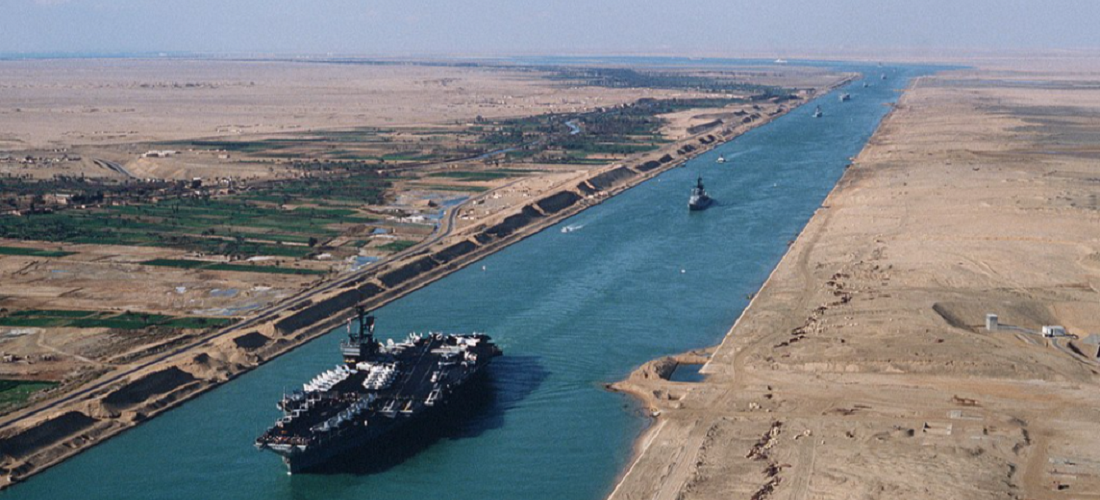
Middle East crisis likely to affect logistics in Brazil
Jan, 15, 2024 Posted by Gabriel MalheirosWeek 202403
The crisis in the Middle East is impacting global shipping lanes and putting renewed pressure on shipping freight rates. In Brazil, the main impact is expected to be felt from February, according to industry analysts. Market concerns that could affect the country include rising freight rates, delays in vessel arrivals, and a shortage of containers.
The crisis began in late 2023 when Houthi rebels from Yemen started attacking ships in the Red Sea in response to the conflict between Israel and Hamas in Gaza. The attacks have had a direct impact on access to the Suez Canal, causing shipping companies to divert ships bound for Europe and the United States to an alternative route through southern Africa—a longer and more expensive route.
Fears of an escalation in the conflict have grown since Thursday (11), when the United States and Britain launched air strikes against rebel bases in Yemen. In response, the group vowed to step up its offensive against the ships. “This has had an even greater impact because oil tankers and cargo ships that were still hoping to pass through Suez have been diverted,” said Rafael Dantas, commercial director of logistics firm Asia Shipping.
On routes from Asia to Europe and the United States, prices have already skyrocketed since last December. In Brazil, the impact is still small. Import freight from China to Brazil is currently around $3,500 per container, according to market sources. This is higher than prices in 2023 but well below the peak recorded at the height of the pandemic when freight rates from Asia exceeded $10,000 per container.
“In Brazil, the impact that exists today is the export cargo that goes to the Middle East and arrives late because ships are taking alternative routes. These are animal proteins and sugar. But there is no impact yet on imports because of the conflicts. It will be felt in three or four weeks if the problem continues,” said Luigi Ferrini, Senior Vice President of Hapag Lloyd in Brazil. For him, the current level of import cargoes from Asia above the 2023 level reflects the higher demand due to the Chinese New Year holiday in February—which every year causes an acceleration of cargoes in the preceding weeks.
The market forecast is that the impact will be more pronounced in the coming weeks. The main impact will be on routes from Asia. Today, between 25% and 30% of Asian imports to Brazil go through Europe (and Suez), according to Mr. Dantas of Asia Shipping.
“This route will have an impact on the price because the freight from Asia to Europe has increased, today it’s $6,000 per container. And those who used to use the Asia-Europe route will want to switch to the direct route to Brazil, which will also increase the price,” he said. In addition, he foresees a delay in the arrival of ships because the alternative route to Suez via southern Africa takes longer. “The first effect Brazil will feel is the price, but there will still be operational problems. They are expected to arrive around February, March,” he said.
Another major concern is the shortage of containers, which are likely to be “stuck” on ships in transit for longer. “When there is a shortage of containers in the world, shipping companies prefer services from Europe and the U.S. Brazil will suffer the most,” said Mario Veraldo, president of logistics company MTM Logix.
He also expects congestion in European ports, which could affect global logistics as a whole.
The chart below shows the progress of container exports to some of Brazil’s leading trading partners in the Middle East, the region most affected by the political havoc in the Red Sea.
Exports to Countries in the Middle East | 2019 – 2023 | TEUs
Despite the concerns, the market does not expect the crisis to reach the levels seen during the pandemic. “Freight rates are unlikely to return to those levels,” said Mr. Ferrini. “The situation is very different; during the pandemic, the crisis was much bigger, the problems started within countries and affected maritime trade. In addition, there is more capacity today than there was then; the lines of the shipowners are more flexible than they were four years ago,” said Mr. Veraldo.
However, there is still uncertainty about the duration and extent of the crisis. “Everything will depend on the interventions that will take place in the region. If there is a war, there will be pressure,” said Mr. Ferrini.
In Mr. Veraldo’s opinion, the best scenario for global logistics is a diplomatic solution to the conflicts, which he considers the most likely path today. Nevertheless, he believes that 2024 will be a year of higher freight rates. “We are working with the scenario of a return to normality in the northern hemisphere by the summer there. We should see higher freight rates in the first half of the year. And in the second half of the year, there will be some accommodation, but without a big drop in prices because it’s the season for restocking.”
Report by Taís Hirata
-
Other Cargo
Sep, 21, 2023
0
Brazil sees surge in beef cattle semen exports, up 13% in 1H23
-
Shipping
Sep, 17, 2024
0
CMA CGM adds another 15,000 TEU vessel to its fleet
-
Trade Regulations
Jul, 16, 2021
0
Bill suspends resolution cutting import tax on capital goods and telecommunications
-
Shipping
Jul, 14, 2023
0
China’s shipbuilding sector expands in H1

